Tuesday, June 26. 2012
-----
de Nicola
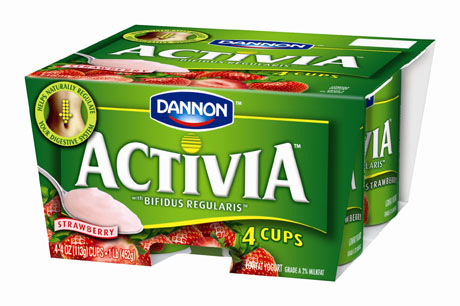
IMAGE: Gut flora redesign, using a yogurt vehicle, is already a commonplace activity at breakfast tables around the world.
For many, the consumption of probiotic supplements is already a daily routine — a regular, intentional, and frequently yogurt-based effort to re-design our intestinal flora. This makes sense: the five hundred (or so) different species of bacteria living inside our guts have an important influence on everything from our ability to digest certain foods to our emotional well-being and behaviour.
Doses of “friendly” bacteria have already been shown to cure chronic digestive illnesses, and, according to Professor John Cryan of the Alimentary Pharmabiotic Centre at University College, Cork, it’s highly likely that they will soon be used to treat “stress-related psychiatric disorders such as anxiety and depression.” These beneficial microbes are typically consumed orally, either dried and encapsulated in supplement form or cultured in a dairy base, although in extreme situations they can also be introduced directly to the colon using the somewhat horrifying-sounding technique of fecal transplant.

IMAGE: Probiotic bacteria.
Last month, however, scientists at the University of Toronto announced the results of a study that examined both babies’ gut bacteria and the bacteria present in dust samples from their homes. To their surprise, they found a significant overlap, suggesting, as Jessica Hamzelou writes in New Scientist, that babies “may be sharing their gut bacteria with the environment and vice versa.”
Extrapolating from this, public health researcher Pilar Francino goes on to speculate that “people living in the same dusty house may also share health and behavioural characteristics.”
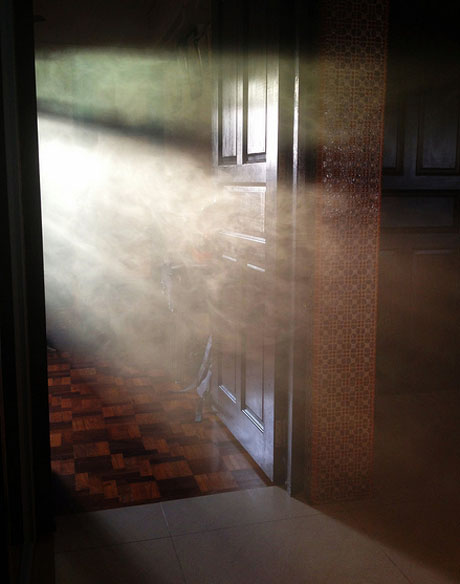
IMAGE: A dusty house, via.
In other words, just as the colour of your walls has been shown to affect your heart rate and blood pressure, your home’s bacterial biome may be making you obese and anxious — or, of course, healthy and happy.
Forget yogurt or fecal transplants — it seems to be only a matter of time before we are able to intentionally inoculate our homes with custom blends of bacteria in order to redesign our gut flora. Designer dust will take its place alongside formaldehyde-free furniture polish and low VOC paint for the responsible homeowner.

IMAGE: A dust cloud envelopes a city, via.
Perhaps, given the rising cost of obesity-related diseases combined with the increasing occurrence of allergies, environmental bacteria supplementation will come to be seen as a public health issue, with sanitation crews spraying down pavements and gutters with a fine layer of dried lactobacilli each week.
Meanwhile, somewhere, someday, the Bazalgette of urban probiotics will install a city-wide enteric enhancement program, combining a biotic sensor network and precision bifidobacteria crop-dusting drones in order to transform the city’s streets, transit network, and shared spaces into a giant, shared digestive supplement.
Friday, June 15. 2012
-----
de noreply@blogger.com (Geoff Manaugh)

I'm excited to be launching a new project called Venue, a 16-month collaboration with the Nevada Museum of Art's Center for Art + Environment, Columbia University GSAPP's Studio-X NYC, and Future Plural, the small publishing and curatorial group I'm a part of with Nicola Twilley.
We kick things off this Friday, June 8, with a launch event at the Nevada Museum of Art in downtown Reno, from 6-8pm; if you're near Reno, consider stopping by!
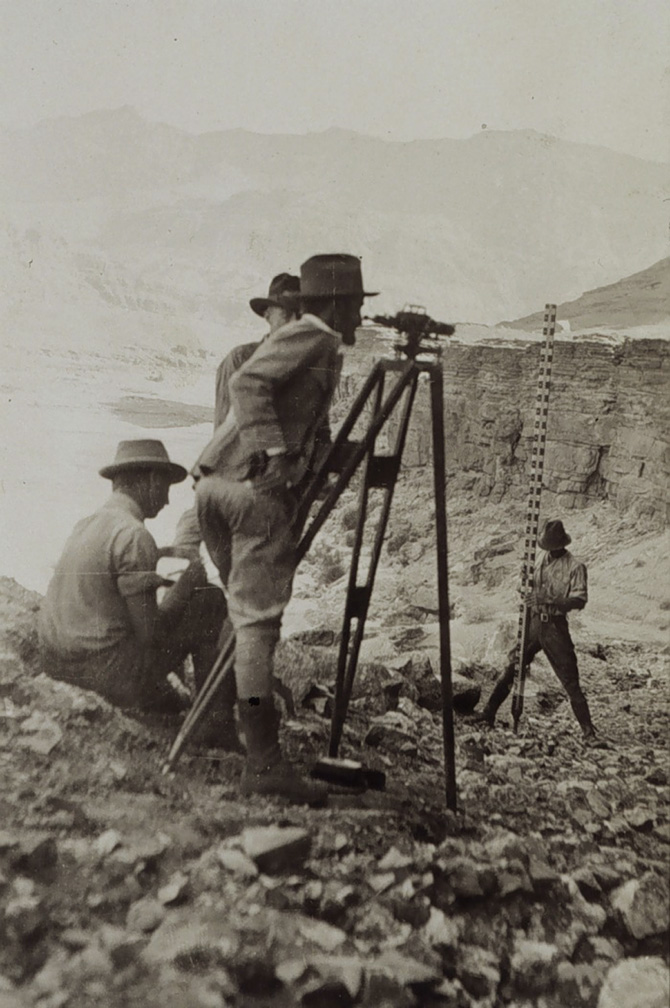 [Image: The tools and props of surveying; courtesy of the USGS]. [Image: The tools and props of surveying; courtesy of the USGS].
In brief, Venue is equal parts surveying expedition and forward-operating landscape research base, a DIY interview booth and media rig that will pop up at sites across North America through September 2013.
Nicola Twilley and I will be traveling on and off, in a series of discontinuous trips, over the next 16 months, visiting a variety of sites including infrastructural landmarks, science labs, factories, film sets, archaeological excavations, art installations, university departments, design firms, National Parks, urban farms, corporate offices, studios, town halls, and other locations across North America, where we'll both record and broadcast original interviews, tours, and site visits. From architects to scientists and novelists to mayors, from police officers to civil engineers and athletes to artists, Venue’s interview archive will form a cumulative, participatory, and media-rich core sample of the greater North American landscape.
 [Image: Understanding landscapes by way of strange devices; courtesy of the USGS]. [Image: Understanding landscapes by way of strange devices; courtesy of the USGS].
While there will no doubt be regular updates here on BLDGBLOG, you can follow along, both online and off, by reading our latest dispatches, suggesting sites and people we should visit, and keeping an eye on our schedule (or signing up for our mailing list) to find out when we will be bringing Venue to a neighborhood near you. In addition, our best content will be syndicated on a dedicated channel online by The Atlantic, so keep your eye out for our first interviews or site visits—photos, short films, MP3s—as our travels get underway.
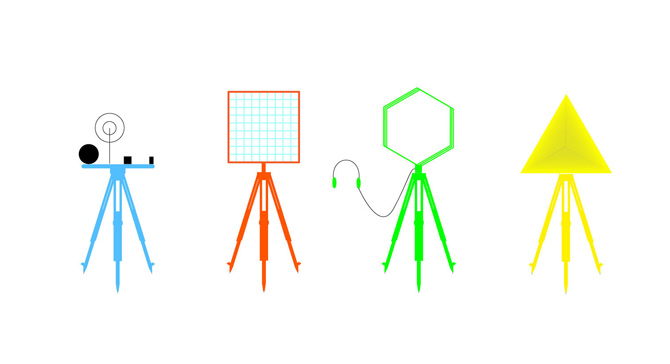 [Image: The Venue tripods, universal mounts for interchangeable devices; designed by Chris Woebken]. [Image: The Venue tripods, universal mounts for interchangeable devices; designed by Chris Woebken].
There's a lot more information available about the project at the Venue website—including some early images depicting the incredible array of devices designed for us by Chris Woebken, a gorgeous hand-made interview box custom-fabricated for Venue by Semigood, and the " Descriptive Camera" that we'll have on the first leg of our trip—so by all means stop by and see the ideas behind the project, from conceptual inspiration taken from historical survey expeditions to Ant Farm's Media Van.
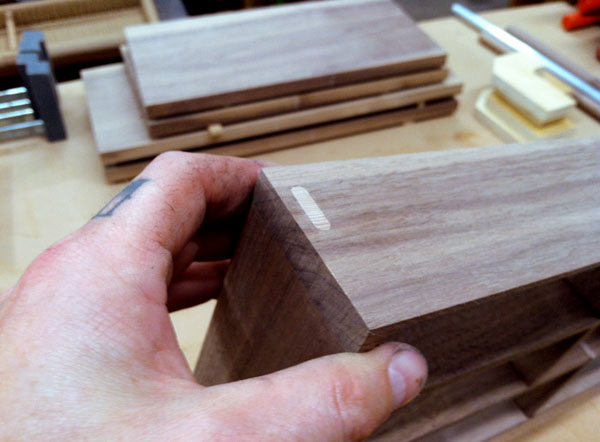 [Image: The Venue box takes shape, custom-designed by Semigood]. [Image: The Venue box takes shape, custom-designed by Semigood].
And hopefully somewhere down the line, we can meet many of you in person.
Personal comment:
An interesting publishing project/initiative to follow and/or participate by Nicola Twilley and Geoff Manaugh.
Via Archinect
-----

An architectural Time Machine by architect Heechan Park explores how to create an architectural time-based event. As the machines blow vapour rings that double as ephemeral scent zones, the public not only experiences a visual performance of smoke vortices travelling through space, but they also perceive scents that are temporally spatialised and visualised.
Personal comment:
I'm not entirely convinced by the use of the term "time-machine" for this project (time-based architecture, indeed), but really interested in the materialisation of shapes through vapour, doubled with scent. It seems to give an ephemeral, evolutive and almost "molecular" nature to architecture.
Wednesday, June 13. 2012
Via Archinect
-----
de MAGAZINEONURBANISM
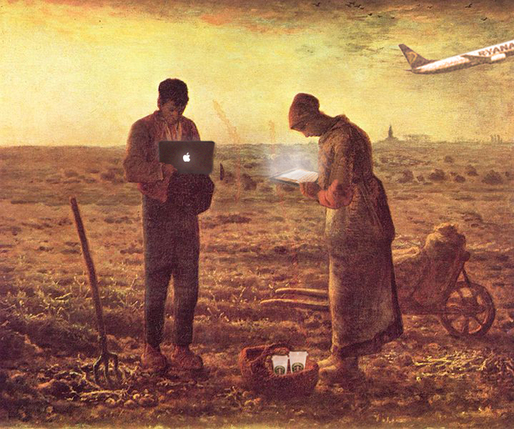
“If you go into the hardcore urban or the hardcore rural, it is quite simple to define it, but that is not so relevant. It is more significant to talk about the condition in between. And this condition is extremely difficult to define.” – Urban planner Kees Christiaanse in conversation with Bernd Upmeyer and Beatriz Ramo on behalf of MONU Magazine
MONU’s call for submissions for its latest issue (#16, Non Urbanism) asked its participants to “investigate how non-urbanism may be defined and identified today, and how non-urban areas interact with and relate to urban areas.“ Fortunately for readers, the printed compendium seems to succeed in largely refuting the very existence of its themed subject matter. Or, if it doesn’t go so far as to refute the ‘non urban’, the content demonstrates how difficult it is to call out any place as not being deeply under the influence of it.
MONU #16’s agenda fits within mounting reactions to the geographic myopia found in some of the contemporary ‘urban age’ rhetoric. ‘Non Urbanism’ explores what happens when the inventory of urban moves beyond widget counts of human bodies for its reductive definition. It asks: what is non-urbanism when we approach the ‘built environment’ in a fully relational way? What happens when we see cities in the wider geographic field of their effects, borrowin...
Monday, June 04. 2012
-----
de Léopold Lambert
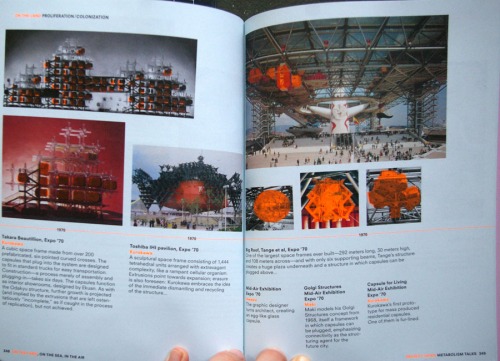
Photograph of the book Project Japan by Rem Koolhaas and Hans Ulrich Obrist. (editors Kayoko Ota with James Westcott) Koln: Taschen, 2011.
In a move that he clearly enjoy, Rem Koolhaas along with Hans Ulrich Obrist re-introduce the Metabolists in an era that consecrates SANAA and their followers as the new Japanese paradigm for global architecture. It is indeed difficult to find two visions of architecture that different and the fact that they were produced in the same country makes this opposition even more visible. The 700-page book Project Japan can therefore be considered, not as a retroactive manifesto (that was the self-definition of Koolhaas’ Delirious New York), but rather as a rehabilitative archive. It is a document that illustrates the coherency of a historical movement created as both individual and collective work in a way that cannot be observed in any way nowadays. Through interviews with almost all the actors of this movement -Kurokawa and Kitutake died since then-, R.Koolhaas and H.U.Obrist explore as much the origins of this ambition (they find them in Kenzo Tange’s experience of the war in China and its large territories) as the globalization of the movement which saw the Metabolists proposed many projects in the Middle East. The photographs of Charlie Koolhaas of several buildings built in the 60′s in their current state also bring an interesting comparison with the original documents and the endurance (or not) of those building to time.
Beyond the subjective reading of the two Europeans, this book is mostly a very valuable archive of documents created by the Metabolists, many of them which are probably not findable in already published books. In this regard, the Repertoire of Metabolism is particularly rich through its succinctness. In thirty four pages, we access to a visual inventory of the various architectural inventions or appropriations that the Metabolists have been developing through their work. The key typological words are the following:
- Capsules
- Ground/Artificial Ground
- Proliferation/Colonization
- Group Form
- Floating Cities
- Unicore/Joint core
- Megaforest
The following (bad quality) photos constitutes an excerpt of this chapter. They are all extracted from the book Project Japan by Rem Koolhaas and Hans Ulrich Obrist. (editors Kayoko Ota with James Westcott) Koln: Taschen, 2011.
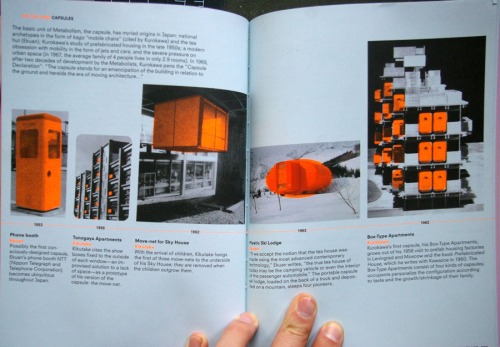
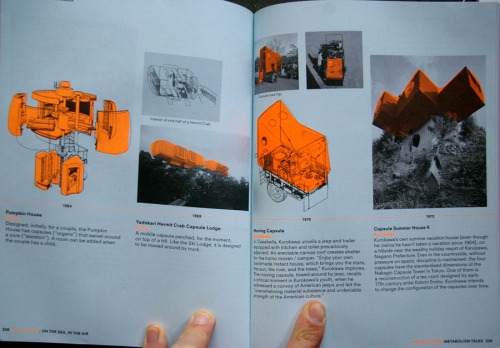
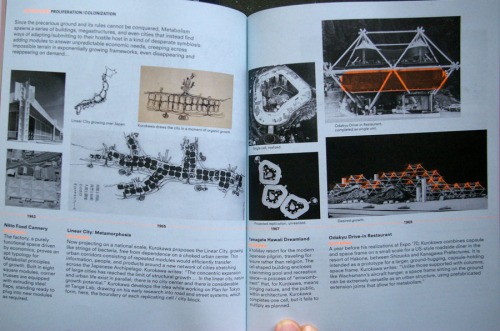
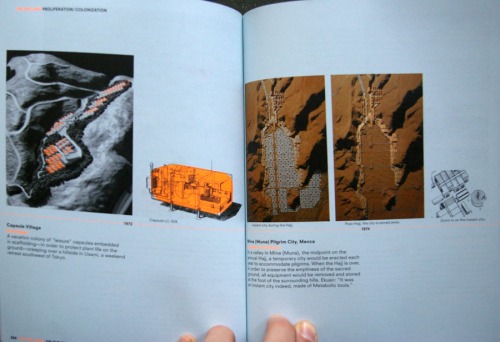
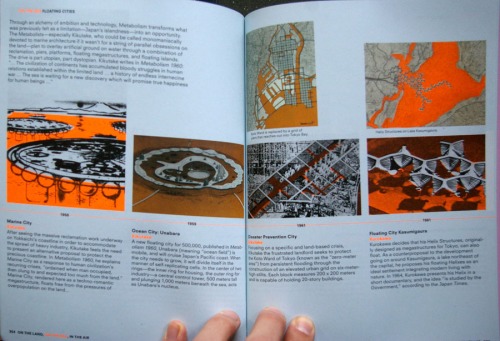
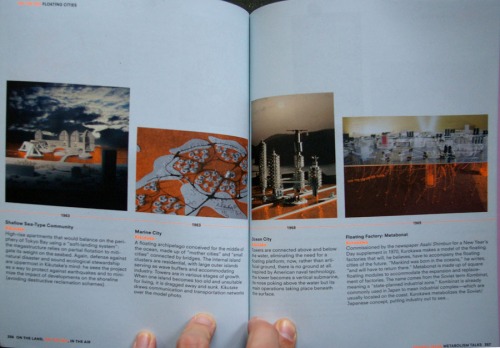
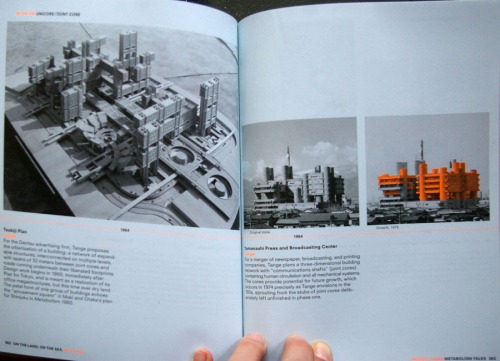
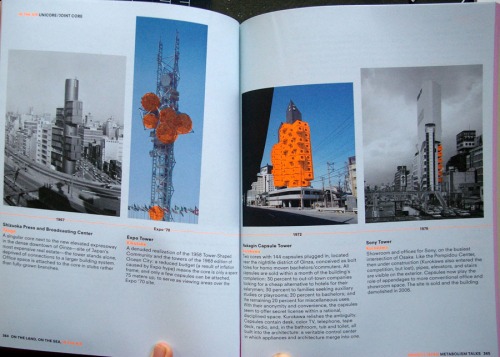
|





 [Image: The tools and props of surveying; courtesy of the
[Image: The tools and props of surveying; courtesy of the  [Image: Understanding landscapes by way of strange devices; courtesy of the
[Image: Understanding landscapes by way of strange devices; courtesy of the  [Image: The Venue tripods, universal mounts for interchangeable devices; designed by Chris Woebken].
[Image: The Venue tripods, universal mounts for interchangeable devices; designed by Chris Woebken]. [Image: The Venue box takes shape, custom-designed by
[Image: The Venue box takes shape, custom-designed by 










